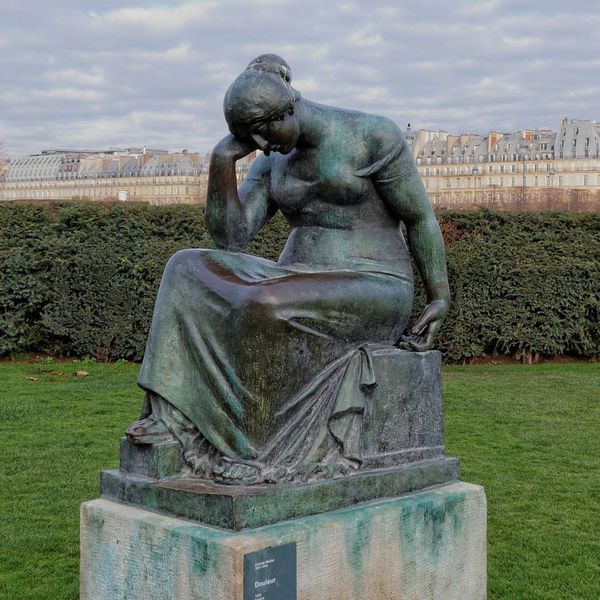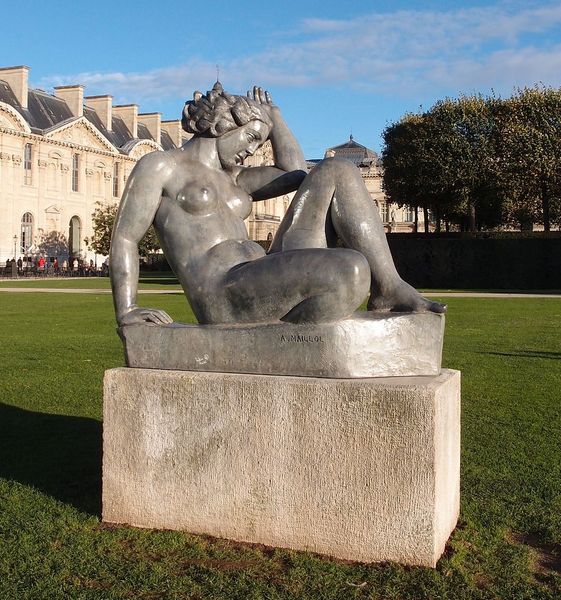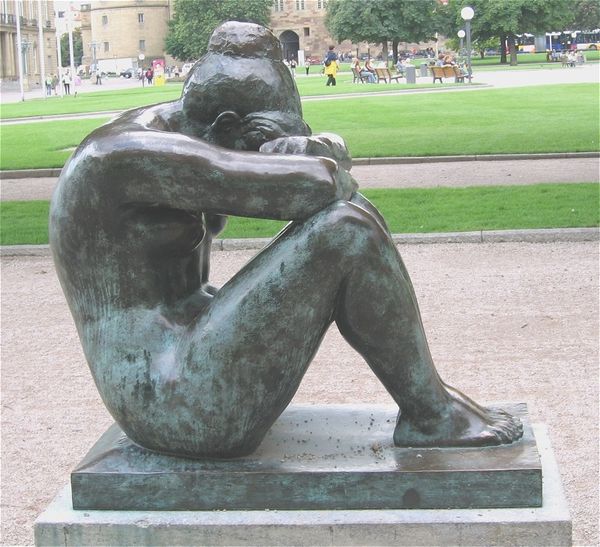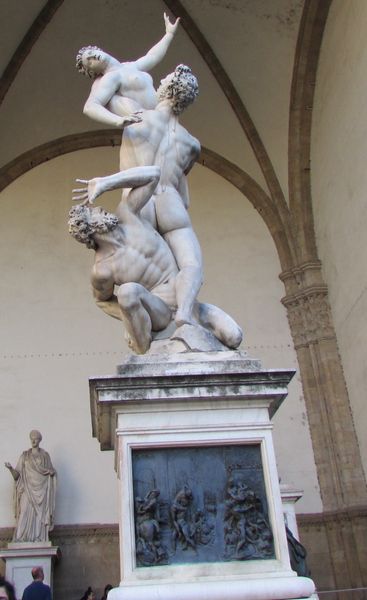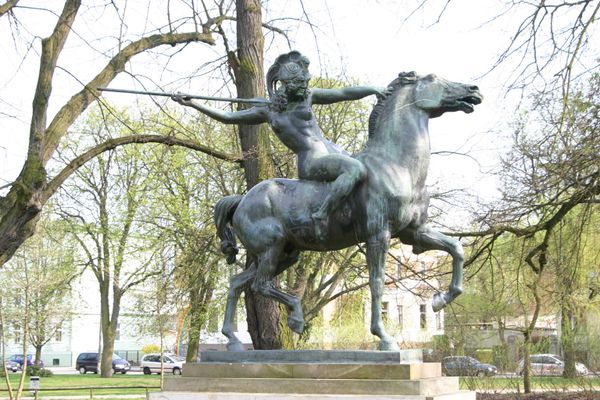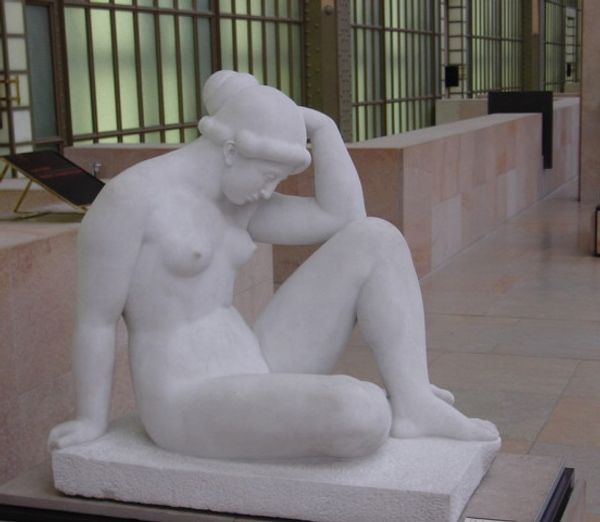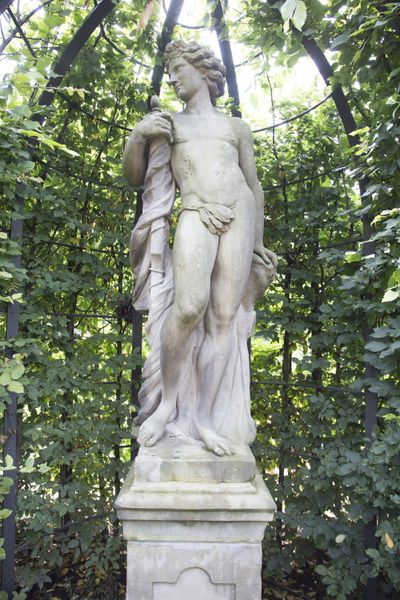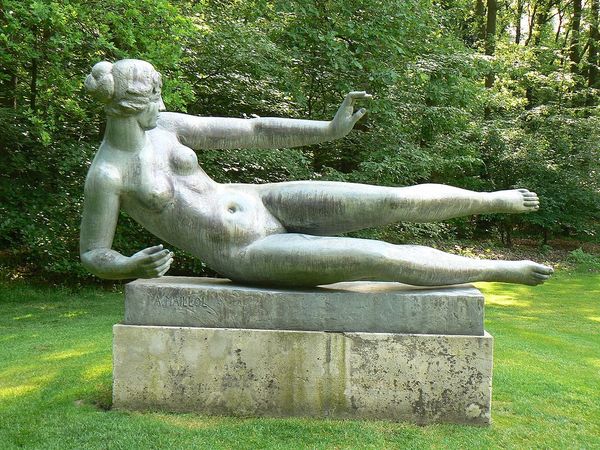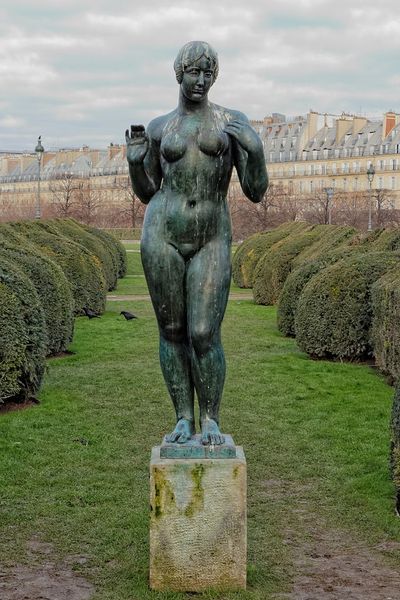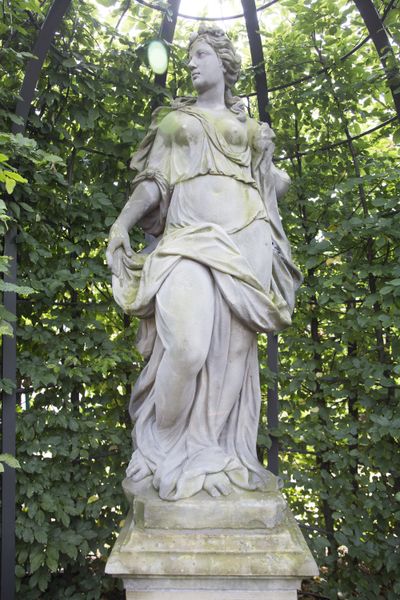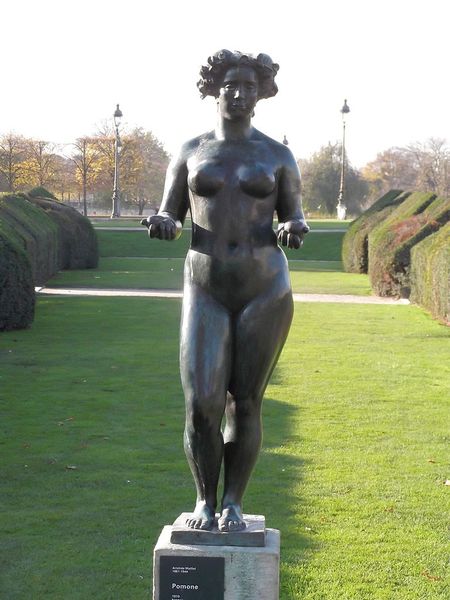
Dimensions: 151.7 cm (height) x 101 cm (width) x 143.5 cm (depth) (Netto), 511 kg (weight) (None)
Curator: Here we have Stephan Sinding’s bronze sculpture, “A Young Woman with Her Dead Husband," created in 1892, now residing at the SMK, the National Gallery of Denmark. It's incredibly moving, don't you think? Editor: Haunting is more like it. The woman's upward gaze contrasted with the lifeless body—it's quite stark. The patina of the bronze lends itself to this morbid sensuality and sorrow. What was Sinding hoping to express with these contrasting figures? Curator: It’s deeply rooted in its historical moment. Think of the prevailing attitudes towards love, loss, and gender at the time. This woman embodies idealized grief, perhaps echoing societal expectations of feminine mourning. How is agency expressed, and repressed here? Editor: Precisely. The work speaks to that societal tension through bronze, a medium typically employed for celebration, but used here to display sorrow. The heavy materiality is vital to the work's theme of sorrow and death. Where was this sculpted and cast? Curator: Sinding, a Norwegian-Danish sculptor, spent much of his career exploring dramatic, often tragic, themes. We must examine representations of women, death, and mourning within that social context to decode the work's statements. Does her posture signify strength or fragility in the face of irreversible loss? The gaze offers a perspective from which one might interpret the overall intent. Editor: I can't ignore the physical labor it took to realize such a piece. The manipulation of the bronze and the creation of the forms—the touch of the sculptor remains apparent. It speaks volumes about artistic labor. Curator: Absolutely, and acknowledging those processes brings a crucial element to our comprehension of the work. But, I find myself coming back to that woman's gaze. The question of her subjectivity seems especially pertinent. Is she simply a symbol of grief, or does the work grant her some form of agency within that representation? What avenues are there to challenge this limited paradigm and introduce different perspectives on this narrative? Editor: Food for thought, and it certainly changes my interpretation of the means of construction. I still look at those hands of hers holding him up, at the surface finish. You have me wondering about its function as something beyond a historical object. Curator: Exactly! It serves as a springboard for vital conversations. Editor: Thanks. I’ll never see bronze quite the same way.
Comments
No comments
Be the first to comment and join the conversation on the ultimate creative platform.
